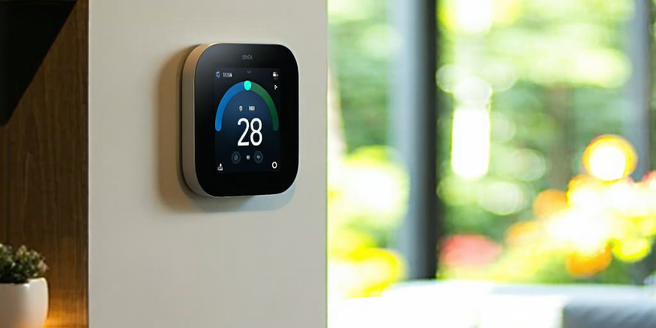Smart Thermostat Benefits

Energy Efficiency and Cost Savings
Smart thermostats offer significant energy efficiency improvements and cost savings. By learning your schedule and adjusting temperatures based on occupancy patterns, these devices ensure that energy is not wasted when heating or cooling is not needed. Not only are they practical, but they also provide an intuitive interface that’s easy for anyone to use. Many smart thermostats provide real-time energy usage reports, allowing homeowners to identify habits that lead to high energy consumption. Some models can even suggest optimal settings for maximum savings. Over time, the initial investment in a smart thermostat can be recuperated through the lower energy bills it helps produce. For those mindful of energy efficiency, a smart thermostat is an invaluable tool for reducing both carbon footprint and utility costs.
Enhanced Comfort and Convenience
Smart thermostats enhance comfort and convenience in homes by providing personalized temperature preferences with ease. With intelligent learning capabilities, these devices adjust automatically to the user’s preferred settings, ensuring a consistently comfortable environment. Furthermore, smart thermostats often come with features like energy usage reports, helping users make informed decisions about their energy consumption. Energy efficiency is also significantly improved with the use of smart thermostats, leading to reduced utility bills. They can be controlled remotely via smartphone apps, allowing users to change settings from anywhere, ensuring the home is at the desired temperature upon arrival. Additionally, many smart thermostats work seamlessly with voice controls through popular virtual assistants, simplifying adjustments even further. This level of convenience and personalized comfort revolutionizes home climate management.
Integration with Smart Home Devices
A key advantage of smart thermostats is their ability to integrate with other smart home devices. Compatibility with smart home ecosystems like Amazon Alexa, Google Home, and Apple HomeKit allows for the creation of customized automation rules. For instance, a thermostat can communicate with smart blinds to close them during peak sunlight hours, or coordinate with smart lighting to simulate occupancy when you’re not home. This integration is particularly beneficial for energy savings, helping to reduce electricity bills. This synergy enhances the overall efficiency and functionality of all interconnected devices, providing a seamless smart living experience. Integration simplifies managing various aspects of home climate, lighting, and security, offering a comprehensive solution to modern living challenges.
Remote Access and Customization
Remote access and customization are defining features of smart thermostats, providing unmatched control over home climates. With the accompanying mobile apps, users can adjust temperatures from anywhere in the world, catering to spontaneous plans or changing weather conditions. This convenience has revolutionized how we interact with our home environments. This remote access ensures the home is always at the optimal climate upon your return. Moreover, this technology represents a significant advancement in household energy efficiency. Furthermore, with customizable settings, users can create tailored schedules for different days of the week, ensuring minimal energy waste while maintaining comfort. Smart thermostats also offer real-time alerts and notifications, keeping homeowners informed about system performance and potential issues.
Environmental Impact and Sustainability
Adopting smart thermostats is a step towards a more sustainable and environmentally friendly lifestyle. By optimizing energy usage, these devices significantly reduce the carbon footprint associated with heating and cooling. They offer the dual benefit of environmental progress and financial savings. With increasing awareness of climate change, more people are turning to smart thermostats as a tangible solution. Less energy consumption not only translates to lower utility bills but also contributes to resource conservation on a larger scale. Many smart thermostats are designed to operate with renewable energy systems, further enhancing their sustainability credentials. Additionally, they educate users about energy efficiency through insightful reports, promoting consciousness about energy consumption patterns. Embracing smart technology in climate control is a proactive measure towards building a sustainable future.